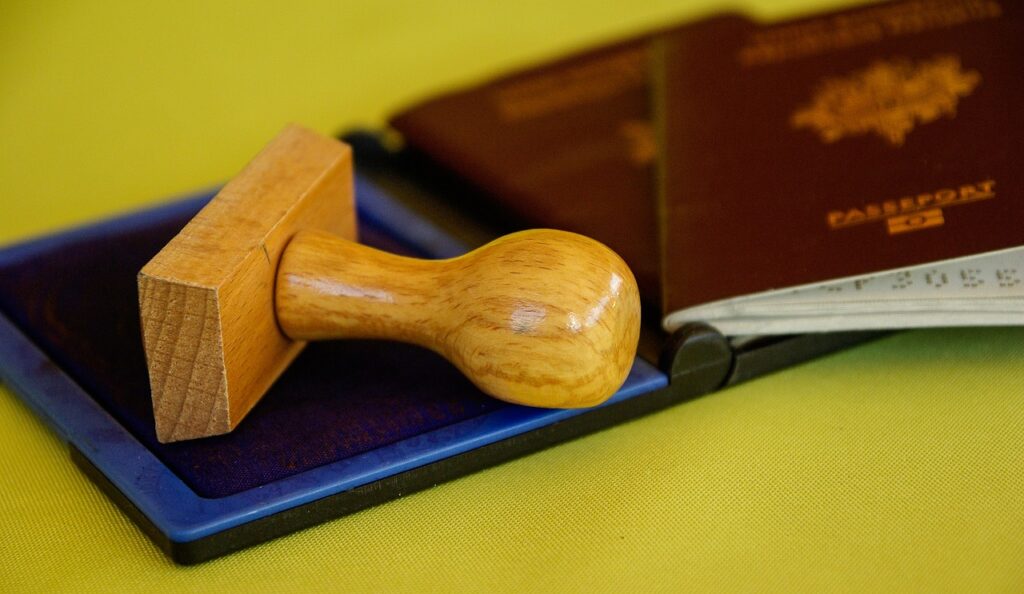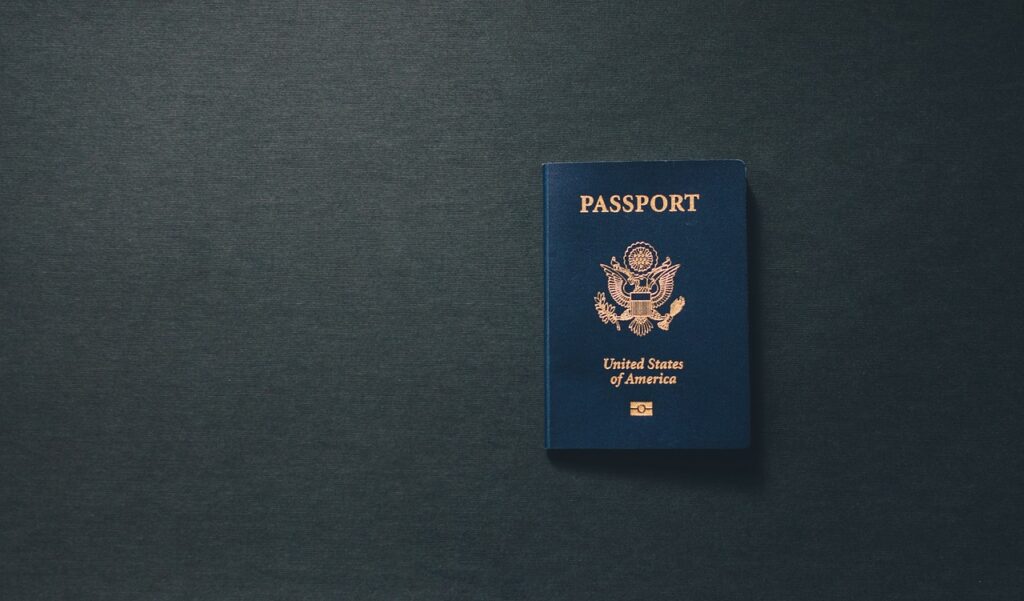Thinking about taking a spontaneous road trip to our friendly neighbors up north in Canada? Well, we’ve got some good news for you – you may not need a passport! That’s right, if you’re a U.S. citizen, you may be able to cross the border into Canada by land without a passport. In this article, we’ll explore the requirements and alternatives to passports for U.S. citizens traveling to Canada by land, so you can hit the road and enjoy all that the Great White North has to offer hassle-free.

This image is property of pixabay.com.
Traveling to Canada by Land
Overview of traveling to Canada by land
Traveling to Canada by land provides a convenient and exciting way to explore our northern neighbor. Whether you’re planning a road trip or simply crossing the border for a day trip, there are important considerations and requirements to keep in mind. This article will guide you through the passport requirements, alternative forms of identification, and the border crossing process.
Land border crossings between the U.S. and Canada
There are numerous land border crossings along the U.S.-Canada border, offering different routes and entry points for travelers. Major crossings include those in New York, Michigan, Washington, and Vermont. It’s essential to choose the appropriate border crossing for your journey based on your intended destination in Canada. Check the website of the Canada Border Services Agency (CBSA) for border crossing locations and their operating hours.
Passport Requirements
General passport requirements for U.S. citizens
When it comes to traveling outside of the United States, having a valid passport is usually a basic requirement. The same applies to traveling to Canada by land. U.S. citizens are required to present a passport when crossing the border. However, there are also alternative documents that can be used in certain situations, which we will discuss later in this article.
Passport alternatives for land travel to Canada
If you don’t have a passport or prefer not to carry it, there are alternative documents that may be accepted for land travel to Canada. These include an Enhanced Driver’s License (EDL), a NEXUS card, or tribal identification for Native Americans. It’s important to note that while these alternatives may be accepted, having a passport is still the most widely recognized and recommended form of identification for traveling to Canada by land.
Enhanced Driver’s License
What is an Enhanced Driver’s License (EDL)
An Enhanced Driver’s License (EDL) is a state-issued driver’s license that has been enhanced to meet specific requirements for cross-border travel. This form of identification is issued by certain states and can be used in place of a passport for land and sea travel between the U.S. and Canada. To obtain an EDL, you will need to provide additional documentation and pass a background check. Check with your state’s Department of Motor Vehicles to see if they issue EDLs.
EDL as an alternative to a passport for land travel to Canada
If you have an EDL, it can serve as a valid form of identification when crossing the border between the U.S. and Canada by land. However, it’s crucial to confirm that the specific land border crossing you plan to use accepts EDLs. While most crossings do, it’s always best to check beforehand to avoid any potential issues. Remember, an EDL is only valid for travel to Canada and Mexico and cannot be used for international air travel.
Trusted Traveler Programs
Overview of Trusted Traveler Programs
Trusted Traveler Programs are designed to expedite the border crossing process for low-risk pre-approved travelers. These programs, such as NEXUS, allow eligible individuals to undergo a background check and, if approved, receive expedited clearance at designated border crossings. They can be a convenient option for frequent travelers to Canada who want to save time and enjoy a streamlined experience.
NEXUS as a Trusted Traveler Program for land travel to Canada
NEXUS is a joint program between the CBSA and the U.S. Customs and Border Protection (CBP). This Trusted Traveler Program allows pre-approved, low-risk travelers to benefit from expedited processing at designated NEXUS border crossings. By becoming a NEXUS member, you can use dedicated lanes and kiosks, reducing your wait time significantly. However, it’s important to note that NEXUS is primarily designed for air and sea travel, and while it can be used for land travel, not all land borders have dedicated NEXUS lanes.

This image is property of pixabay.com.
Native Americans and Tribal Identification
Special considerations for Native Americans
Native Americans born in Canada or the United States have unique considerations when traveling by land between the two countries. The Jay Treaty of 1794 provides certain rights and benefits to eligible Native Americans, including the ability to freely cross the border. However, it’s still advisable for Native Americans to carry proper identification, which can include tribal identification cards or other recognized forms of identification.
Using Tribal Identification for land travel to Canada
Tribal identification cards can be used as an alternative to a passport or EDL when crossing the border by land. However, it’s essential to ensure that the specific border crossing you plan to use accepts tribal identification cards. Some border crossings may have specific requirements or limitations regarding tribal identification, so it’s crucial to do your research beforehand.
Traveling with Children
Passport requirements for children traveling to Canada
Children, including infants and minors, require proper identification when traveling to Canada by land. The general rule is that each child must have a valid passport. However, certain exceptions apply depending on the child’s age and the relationship to the accompanying adult. It’s crucial to consult the CBSA website or contact the appropriate authorities to understand the specific requirements for children traveling to Canada.
Alternatives for children traveling by land without a passport
In certain situations, children may be able to travel by land to Canada without a passport. For example, children under the age of 16 can use their birth certificate as proof of citizenship when crossing the border by land. However, it’s recommended to have a passport for each child to avoid any potential complications or delays.

This image is property of pixabay.com.
Prohibited or Restricted Persons
Persons not eligible for land travel to Canada without a passport
There are individuals who are not eligible to travel to Canada by land without a passport or alternative approved documentation. These may include individuals with criminal records, individuals with outstanding warrants, or individuals who have been previously deported from Canada. It’s essential to understand that border officials have the authority to deny entry to anyone they deem inadmissible based on their background or circumstances.
Restrictions for certain individuals
Even if you have a valid passport or alternative form of identification, it’s important to be aware of any restrictions that may apply to certain individuals when traveling to Canada. For example, individuals with dual citizenship may face additional scrutiny or requirements, and it’s advisable to consult with the appropriate authorities to understand any specific restrictions that may affect you.
Documentation and Identification
Other documents required for U.S. citizens traveling to Canada by land
While a passport, EDL, or alternative identification is the primary document required for U.S. citizens traveling to Canada by land, there may be additional documentation that can be helpful to have on hand. This includes proof of citizenship, such as a birth certificate, and proof of residency, such as a driver’s license or utility bill. It’s advisable to carry these documents as a precautionary measure to assist with the border crossing process if needed.
Acceptable forms of identification for land travel to Canada
In addition to passports, EDLs, and tribal identification cards, there are other acceptable forms of identification for land travel to Canada. These include permanent resident cards, U.S. military identification cards, and U.S. passport cards. It’s essential to verify the specific requirements and acceptable forms of identification for the border crossing you plan to use, as they may vary by location.
Border Crossing Process
Customs and immigration procedures at the U.S.-Canada border
When crossing the U.S.-Canada border by land, you will need to go through customs and immigration procedures. This includes presenting your passport or alternative form of identification, answering questions from border officials, and possibly undergoing a vehicle inspection. It’s important to be prepared and have all necessary documents readily accessible to ensure a smooth and efficient process.
Steps for crossing the border by land
To successfully cross the U.S.-Canada border by land, there are several essential steps to follow:
- Approach the border crossing and follow any signage or instructions.
- Stop at the border booth and roll down your window.
- Present your passport or alternative identification to the border official.
- Answer any questions truthfully and provide any additional documentation if requested.
- If instructed, proceed for a vehicle inspection or further questioning.
- Once cleared, follow any additional instructions and continue your journey into Canada.
Frequently Asked Questions
Can U.S. citizens use a passport card for land travel to Canada?
Yes, U.S. citizens can use a passport card for land travel to Canada. A passport card is a more convenient and wallet-sized alternative to a traditional passport book. It is specifically designed for land and sea travel between the U.S., Canada, Mexico, Bermuda, and the Caribbean. However, it’s important to note that a passport card cannot be used for international air travel.
Is a visa required for U.S. citizens traveling to Canada by land?
No, a visa is not required for U.S. citizens traveling to Canada by land. U.S. citizens can enter Canada for tourism or business purposes without a visa for stays of up to six months. However, it’s essential to have a valid passport or alternative approved form of identification, as discussed earlier in this article.
Didn't find what you were looking for? Search here
